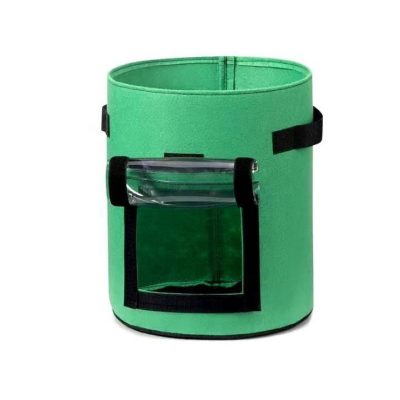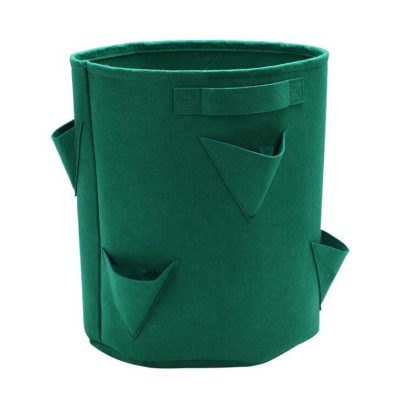Planting in fabric grow bags can be highly rewarding, and here are some tips and tricks to help ensure successful growth:
- Select the right size: Choose grow bags that are appropriately sized for your plants. Ensure they have sufficient depth and width to accommodate the plant’s root system.
- Prepare the grow bag: Before planting, moisten the grow bag to help activate the beneficial properties of the fabric and promote proper drainage.
- Use quality potting mix: Opt for a high-quality, well-draining potting mix suitable for your plant type. Avoid using regular garden soil, as it may become compacted and hinder root growth.
- Provide proper drainage: Ensure the grow bag has adequate drainage holes at the bottom to prevent waterlogging. Elevating the bags on bricks or a stand can further enhance drainage.
- Consider drip irrigation or self-watering systems: Fabric grow bags can dry out more quickly than traditional containers, especially in hot climates. Installing a drip irrigation system or using self-watering mechanisms can help maintain consistent moisture levels.
- Monitor watering needs: Check the moisture level of the soil regularly by inserting your finger into the soil up to the first knuckle. Water the plants when the top inch of soil feels dry, but avoid overwatering.
- Implement mulching: Apply a layer of organic mulch, such as straw or wood chips, to the surface of the soil in the grow bag. Mulch helps retain moisture, regulate soil temperature, and suppress weed growth.
- Fertilize appropriately: Use a balanced, slow-release fertilizer or organic compost to provide essential nutrients to your plants. Follow the recommended dosage and application instructions for the specific plant species.
- Rotate your grow bags: To promote healthy plant growth, rotate the placement of your grow bags every season. This helps prevent soil-borne diseases, balances nutrient depletion, and reduces the likelihood of root binding.
- Prune and train plants: Regularly prune and train your plants to maintain their shape and promote better air circulation. This helps prevent diseases and encourages optimal growth.
- Monitor for pests and diseases: Inspect your plants regularly for any signs of pests, diseases, or nutrient deficiencies. Promptly address any issues to prevent them from spreading to other plants.
- Overwintering: In colder climates, fabric grow bags can be moved indoors or into a greenhouse to protect the plants during the winter months. Ensure proper lighting, temperature, and humidity conditions are maintained.
By following these tips and tricks, you can maximize the potential of your fabric grow bags and create a thriving environment for your plants. Happy gardening!








